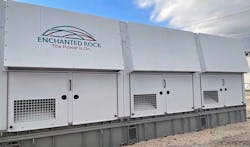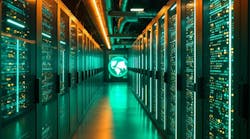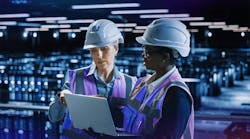Data Centers as Good Grid Citizens: How Microgrids Can Turn Facilities into Welcome Members of the Community
As data center operators race to deploy new facilities, ‘speed to market’ has emerged as a key factor that clients are looking to when selecting a data partner. The ability to rapidly deploy these facilities can be the difference between securing a contract, and losing it to a competitor that is able to have a facility online sooner.
However, in areas like Northern Virginia, Oregon and other key markets, data centers are facing a slowdown on development due in part to the challenges of an increasingly complex power grid and evolving energy mix, and concerns about their ability to adequately meet the power demands. Additionally, as communities consider the impacts on air quality and local noise levels that development can have, securing permitting for new facilities has grown increasingly challenging. The data centers that are able to overcome these concerns, and prove that they will not bring additional instability to the grid and disturb local communities, will be the ones that are able to secure permitting the fastest.
Microgrids offer data centers the opportunity to not only address the concern of being a grid burden, but actually turn data centers into good grid citizens that actively contribute to the improvement of grid stability. By equipping data center facilities with microgrid systems, they can become distributed energy resources (DERs), capable of reacting to grid conditions in real time to help mitigate outages and grid stress than can cause outages.
For example, during periods of high power demand, data centers can temporarily power themselves using their microgrid systems, reducing their reliance on the grid. This can free up the power that was intended to supply the facility, which can then be diverted elsewhere. In this way, data centers can react in real time to improve grid flexibility.
In fact, some microgrids can take their contributions a step further. During times when grid strain is high, these microgrids can actually feed power back into the grid, not only reducing demand, but actually increasing supply. This will provide much needed relief to the grid, as the microgrid supports the local utility in meeting the needs of its customers. As an additional benefit to the data center, it can be financially compensated for these energy sales, thus turning its role as a DER into an additional revenue stream.
These microgrids also offer the benefit of reducing the environmental and public health impact of facilities on their communities. Typically, data centers utilize diesel generators for their backup power systems, despite their unreliable and polluting nature. Diesel generators emit greenhouse gasses, as well as harmful local pollutants, giving further reason for local community members to oppose the construction of data centers in their neighborhoods. These generators also tend to be loud, raising additional concerns about noise.
However, diesel generators can be replaced by microgrids that meet these backup power needs while utilizing cleaner fuel options such as natural gas and renewable natural gas (RNG), with the ability to further integrate with clean energy technologies such as solar, wind and battery storage. Microgrids can also be future-proofed to be capable of working with emerging technologies such as hydrogen. These alternatives can address diesel’s environmental, public health, and noise concerns without sacrificing reliability. Natural gas microgrids can be ten times cleaner than their diesel counterparts, while being powered by underground pipelines that can remain secure during extreme weather conditions that may cause grid disruptions. In this way, microgrids can further support data centers in addressing concerns that may hinder their construction.
By adopting microgrid technologies, data centers can position themselves as critical contributors to grid stability, combatting the perception that they will bring undue burden to their communities. By offering this benefit, data center operators can make a stronger case for the necessary permitting from local utilities and governments, helping speed up their deployment processes. By securing the necessary authorizations faster than their competitors, these data centers can boast their superior ‘speed to market,’ attracting clients who may be turned off by slower alternatives. As the needs of the power grid evolves, data centers must evolve alongside it, adopting these technologies and best practices to position the industry to act as welcome, supportive citizens for the communities in which they operate.



